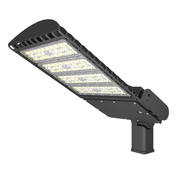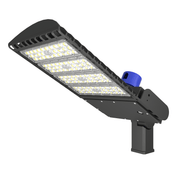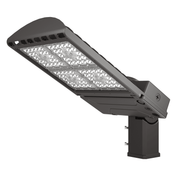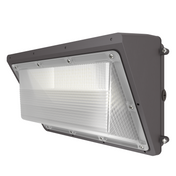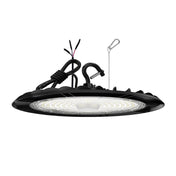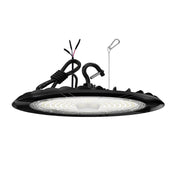
1. What does wattage mean?
Lamp wattage is the amount of energy needed to produce an amount of light. The higher the wattage, the brighter the light, but also the more power it uses. The efficiency of this technology is introduced through the use of incandescent bulbs.
For example:
A 40-watt incandescent lamp produces only 380-460 lumens, requiring 40 watts of energy per hour.
A 100-watt incandescent lamp produces 1700-1800 lumens and requires 100 watts of electricity per hour.
This is an inefficient type of lighting and there have been many developments, such as the advent of fluorescent and compact fluorescent lamps and metal halide, low-pressure sodium, and high-pressure sodium. Fluorescent and compact fluorescent lamps produce superior lighting at much lower wattages, however, they have some environmental problems and produce pollutants. Metal halide, LPS, and HPS produce better illumination than ordinary incandescent lamps; however, they typically have much higher wattages and consume much more power than their CFL or LED counterparts.
For example.
40-watt incandescent lamps are now replaced by 9-watt CFLs or 4-watt LEDs
60-watt incandescent lamps are now replaced by 13-watt CFLs or 7-watt LEDs
100-watt incandescent lamps are now replaced by 32-watt CFLs or 15-watt LEDs
When light sources are changed to CFLs or LEDs, they provide the same or better lighting but use much less electricity. For example, I use a 7-watt LED bulb in my bedroom light and it is very bright. The warehouse has about 150 square feet of area with three 150-watt incandescent bulbs that were subsequently replaced with 13-watt CFL lighting. These areas are now much better lit while consuming a fraction of the original power requirements.
2. What does lumen mean?
Lumens are the amount of light emitted by a light. If you replace a traditional 150-watt bulb with approximately 2600 lumens, you can achieve approximately the same brightness using a 42-watt CFL or 25-watt LED. This reduces the required luminaire power by more than 80%. MKLIGHTS SE Series 100-watt LED street light can produce 16,500 lumens and can replace most highway and parking lot lights as a more efficient, cost-effective light, and LED luminous efficacy continues to improve every year.
3. Why are power and lumens important for solar lighting?
Solar lighting requires both lumens and wattage to be considered. The higher the wattage, the shorter the operating time of the fixture, and the lumens determine the amount of light emitted by the lamp. The higher the luminous efficiency of the lamp, the smaller the power of the lamp when it reaches the required illumination, the smaller the load, the smaller the solar panel and battery can be matched, and the lower the cost of the whole system.
Solar lights are usually installed at a low height and can be used with small wattage, and high luminous efficacy street lamp heads. For more information on solar and LED lighting, see: Why solar and LED lighting are a perfect match.
Solar street lighting systems use lamps ranging from 20W-150W, usually in the 35-50W range for most applications. The high luminous efficacy of LED street lights has greatly reduced the cost of solar systems, while also making solar street lights better promoted, and many residential and remote areas are now popularizing solar street lights.
MKLIGHTS' street lights procure a professionally designed road spectrum that shines all the light onto the road, which means the light is pointed at the ground in a specified distribution to achieve the desired coverage. In addition, conventional bulbs are spherical and shine in a 360-degree direction, which means a lot of light is wasted, while LEDs direct light to where it is needed.
4. Efficiency comparison table of different light sources
(History of the development of light sources: Incandescent lamps to Straight tube fluorescent lamps to High-efficiency electronic energy-saving lamps to LED lamps)
| Light Sources | LED | Fluorescent lamp | Ordinary light bulb | High-pressure sodium lamp |
| Efficiency of light source | 200lm/w | 80 lm/w | 20 lm/w | 120 lm/w |
| Driver efficiency | 92% | 85% | 100% | 90% |
| Effective light efficiency | 90% | 60% | 60% | 60% |
| Efficiency of Fixture | 90% | 60% | 60% | 60% |
| Lifetime | 100000hrs | 2000hrs | 2000hrs | 10000hrs |
In summary, the actual efficiency of various light source lamps is as below.
LED calculation: 200*0.92*0.90*0.90=150 lumens/watt
Fluorescent lamp calculation: 80 * 0.85 * 0.6 * 0.6 = 24.5 lumens / watt
Ordinary bulb calculation: 20 * 1 * 0.6 * 0.6 = 7.2 lumens / watt
High pressure sodium lamp calculation: 120 * 0.9 * 0.60 * 0.60 = 38.9 lumens / watt
As we can see, the actual efficiency of LED lamps is 6 times that of general fluorescent lamps, 20 times that of ordinary incandescent bulbs, and 4 times that of high-pressure sodium lamps.
That means the power between LED lamp sodium lamps can be converted as follows:
60W LED lamp = 250W sodium lamp;
100W LED lamp = 400W sodium lamp;
250W LED lamp = 1000W sodium lamp
5. Conclusion
With the improvement of LED lighting efficiency, the wattage will no longer be the most important factor in lighting, but light efficiency, because the same wattage, the higher the light efficiency, the less power consumed by the lamps, which will be the future trend of urban lighting.



